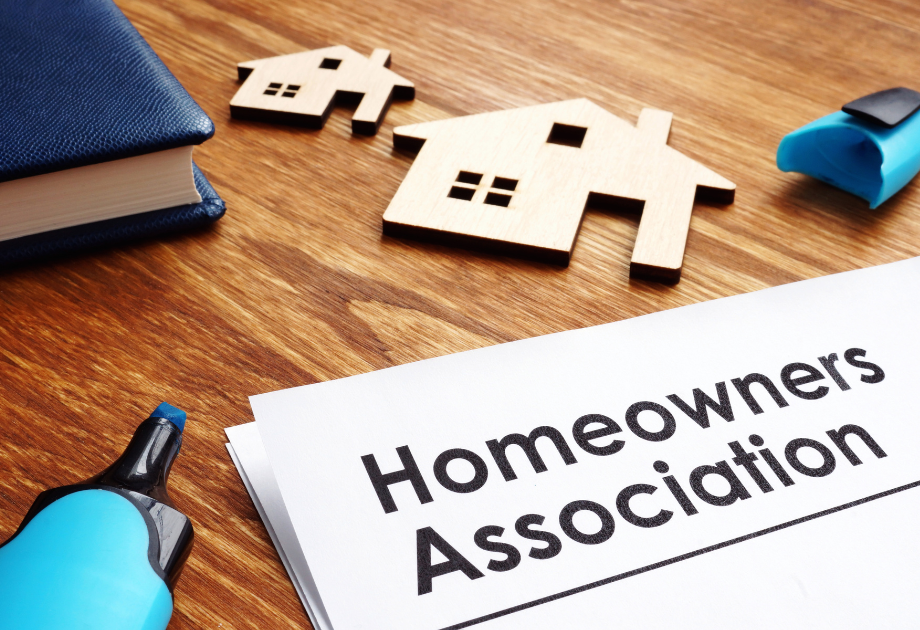What Your HOA Handles (and What It Doesn’t)
What Your HOA Handles (and What It Doesn’t)
.jpg)
You’re looking at your home one afternoon when you spot a loose shingle, a crack in the sidewalk, or a porch light that won’t stop flickering. You pause, trying to remember—isn’t that something my community association is supposed to take care of? But when you check in, you find out it’s actually yours. That kind of surprise happens more often than you might think.
Living in a managed neighborhood comes with a lot of advantages, but figuring out who handles what isn’t always as clear as it should be. In this blog, we’ll break down what most associations take care of, what typically falls to individual homeowners, and how professional management can help keep things consistent across the board.
What the Association Usually Takes Care Of
Every neighborhood is different, but most community associations take care of the things that affect the whole community and not individual homes. These are the shared elements that keep your neighborhood running smoothly and looking its best.
Shared Amenities and Common Grounds
Think about the places everyone enjoys: the pool, park, clubhouse, walking paths, and community signage. These areas are almost always maintained by the association, which is part of what your HOA fees go toward. Landscaping, lighting, pest control, and general upkeep are usually part of the package—so those shared spaces stay safe, clean, and welcoming.
Exterior Features in Attached Homes
If you live in a condo or townhome, chances are your exterior walls, shared roof, gutters, and sometimes even porches or stairways are maintained by the association. That’s because those parts of your home are physically connected to your neighbors’. When upkeep in one spot could affect several homes, it usually becomes a community matter.
What Falls on the Homeowner’s Plate

Once you cross the line into areas that serve only your household, responsibility usually shifts to you. Even in shared communities, you’ll still have spaces and systems that are all yours to manage.
Inside the Walls and Under the Roof
Interior features like your appliances, water heater, HVAC system, plumbing, and electrical are typically homeowner responsibilities. The same goes for things like drywall, flooring, and paint. If it’s on the inside and only serves your home, it’s probably up to you.
Roof repairs can fall into a gray area. In single-family homes, shingles and other roof components are usually the homeowner’s responsibility. But in condos or attached homes, the association might manage the roof as part of the shared structure. It all depends on how your community defines individual versus common elements.
Yards, Patios, and Exclusive-Use Spaces
Outdoor areas can be some of the trickiest when it comes to responsibility. In many communities, front and back yards that are clearly part of a homeowner’s lot, especially in detached homes, are the homeowner’s responsibility to maintain. That usually includes mowing, weeding, and taking care of any landscaping within your boundary lines.
Patios, driveways, and balconies are a bit more nuanced. Even if they’re physically connected to the home, they might be considered “exclusive-use common areas,” which means the association technically owns them, but they’re assigned to you. In those cases, you’re responsible for everyday upkeep, even though the association may step in for larger repairs or structural issues.
It’s also worth noting that while you may take care of these spaces, you might not have total freedom over how they look. Your association can still set rules for things like furniture, decor, or landscaping choices, so it’s a good idea to double-check before making any changes.
Why the Rules Change from Place to Place

Two neighborhoods might have the same look and feel, but the way they operate behind the scenes can be completely different. That’s because each community association is governed by its own documents, written specifically for that community.
A Quick Guide to Governing Docs
If you’ve heard of CC&Rs, bylaws, or rules and regulations, you’re already on the right track. CC&Rs (short for Covenants, Conditions, and Restrictions) typically explain who’s responsible for what, along with other important policies. Bylaws cover how the association is run—think meetings and board roles. Rules and regulations go into more of the day-to-day expectations, like parking and pet policies.
Most people get copies of these at closing, but if yours are buried in a drawer somewhere or you never received them, the board or your community manager can help you track them down. It’s worth the read.
How Professional Managers Keep Things Fair
Even with the right documents in hand, it’s not always obvious how to apply the rules. That’s where professional community managers step in. They aren’t the ones who make the rules, but they do help apply them fairly and consistently.
Helping Homeowners Get Clear Answers
When you’re not sure whether something is your job or the association’s, a community manager can take a look at your documents and help explain how the responsibility is handled in your neighborhood. Our team does this all the time—clearing up questions, saving people time, and helping avoid missteps.
Supporting Consistency Across the Neighborhood
We also work closely with board members to make sure the rules are applied fairly. When everyone’s held to the same standard, there’s less confusion and frustration—and a lot more trust between neighbors. That kind of consistency builds stronger, more connected communities.
When in Doubt, Turn to Management Plus
If you’ve ever had questions about what your HOA is responsible for—or what falls to you—you’re not alone. These topics come up often, especially for new homeowners adjusting to life in a community association. The answers usually depend on your specific governing documents, but that doesn’t mean you have to figure it all out on your own.
At Management Plus, we help homeowners understand how things work in their neighborhood, avoid common misunderstandings, and feel more confident about their role in the community. Curious about how HOA fees are used, or unsure about the association’s authority when it comes to your property? We can help make sense of it, using the actual rules that apply to your home.
Reach out to us for personalized guidance, or learn more about how our HOA management services support communities like yours.
And if you serve on your community’s board, stay tuned. We’ve got a follow-up post coming just for you.
